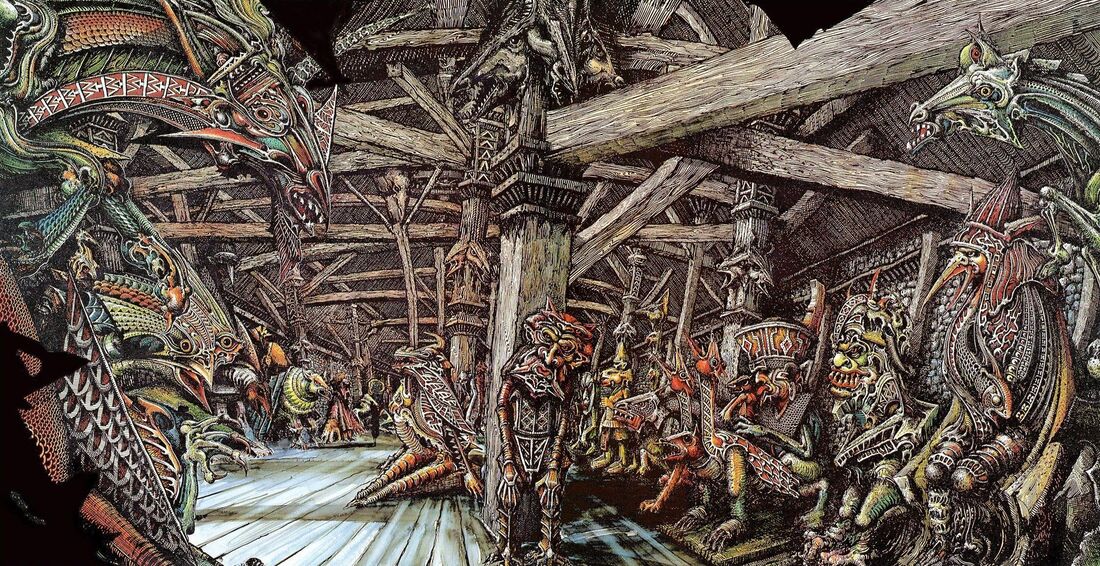Book review: Anything you can imagine - Peter Jackson and the making of Middle Earth, by Ian Nathan7/5/2021 I can vividly remember the first time I watched The Fellowship of the Ring – in a packed cinema, with an excited and expectant audience. I’d been counting down the weeks, the days, the hours to the opening of the film. I’d long been a huge admirer of J.R.R. Tolkien’s work, and a trilogy of films based on The Lord of the Rings was something I’d dreamed of for years. However, my excitement was tempered by a twinge of trepidation – surely no film could truly capture the depth of Tolkien’s epic, surely no-one could bring Middle-Earth to life on the screen? Well, with Frodo and friends in Peter Jackson’s safe hands, I need not have feared. Like millions of others, I was enthralled by The Fellowship of the Ring – a film beautifully designed and superbly acted, with moments that chimed perfectly with the book, such as the bucolic Shire, the fearsome Black Riders and the film’s (arguably the trilogy’s) highlight sequence, the Mines of Moria, especially the mighty Balrog. As soon as The Fellowship of the Ring ended, I wanted to see it again, and of course, looked eagerly forward to seeing The Two Towers and The Return of the King, both of which proved to be sublime cinematic achievements in their own right. Anything you can imagine tells the story of how these wonderful films came to be made, and it is a fascinating tale. The book gives insights into the lengthy and complex creative process, as well as the Byzantine twists and turns of the film industry. The journey of the film from Peter Jackson’s and Fran Walsh’s initial idea of adapting The Lord of the Rings to the final, final green light for the project is deeply interesting, a winding route encompassing King Kong, Miramax and the Weinstein brothers (shudder), to the dramatic intervention of New Line Films, and their bold, unprecedented decision to make three films back-to-back. It almost reads like a thriller and one can only admire the tenacity of Jackson and his colleagues to bring the project to fruition where surely many others would have given up.
Nathan also superbly tracks the fascinating ascent of Peter Jackson from maverick, self-taught director of low budget splatter films, through to the blossoming of his talent in pictures such as Heavenly Creatures, to eventually becoming one of the world’s most successful movie-makers. Once the book moves into the nuts and bolts detail of actually making The Lord of the Rings film, I found it lost a little of its focus and strong narrative, but it always remains highly readable and reflects the enormous challenges and sheer scale of creativity involved in bringing the films to life. From the groundbreaking special effects (such as the MASSIVE software used to help portray the epic battles, and the creation of Gollum), the stunning sets, and the music of Howard Shore, truly one of the great triumphs of the film trilogy, the scale of what was accomplished, often pushing film-making into new areas, becomes clear. Peter Jackson is the conductor of this great orchestra, but Nathan rightly makes sure credit is given to the many others, especially his redoubtable fellowship of Kiwi collaborators, who surmount problem after problem, refuse to submit to the project’s many naysayers, and doggedly drained every last ounce of creativity and energy to make the best possible version of Tolkien’s masterpiece. The book treads more lightly on the generally less-loved The Hobbit trilogy, but gives an absorbing insight into the legal, logistical and creative issues in the troubled gestation and production of these films. And for all the flaws of The Hobbit trilogy, and I confess they leave me a little cold, Nathan rightly acknowledges their successful elements, such as the performances of Martin Freeman and Ian McKellen, the often stunning visuals, and the memorable depiction of Smaug. It’s difficult to imagine a more daunting cinematic journey to document than The Lord of the Rings trilogy, but Nathan succeeds with flair and humour, and his passion for these films, and for cinema in general, shines through on every page. I’d strongly recommend Anything you can imagine for anyone interested in The Lord of the Rings films or just in movie-making in general. And having read this book, I now want to watch and enjoy all three films (extended editions, of course) all over again…
1 Comment
All authors draw upon a wide range of inspirations when creating their stories, such as real-life experiences, places they have visited, concerns about the world and society, books they have read. For me, visual art has always inspired and influenced my writing. I cannot claim to be an expert in art history, and as much as I enjoy sketching, my artistic skills are limited at best, but I find it an endlessly absorbing subject and a way of finding different perspectives on the world. By offering us a safe space to consider and explore feelings and fears we otherwise feel uncomfortable in confronting, art can help us all feel a little less alone in this world.
In this blog series, I am going to focus on four artists who have been particularly important to me and my creative work: Ian Miller, Elisabeth Frink, Paul Nash and Alfred Wallis. In this post, I am going to discuss the work of British fantasy artist Ian Miller. Since childhood I have loved the books of J.R.R. Tolkien, and my first encounter with the artwork of Ian Miller was in the book A Tolkien Bestiary; many beautiful and atmospheric images filled the pages of this book, but for me Miller’s illustrations stood out.
Whenever we read a novel we have our internal interpretations of the story, the setting and the characters, and I found in Miller’s images the darkness and intensity I’d always enjoyed in Tolkien’s books. For example, his portrayal of Helm’s Deep conveyed the terrifying scale of the battle, especially the monstrous, remorseless power of Saruman’s army – the whole image is so alive, I felt as though I could hear the battle, the clashing of steel, the drums, the screams. As with all Miller’s work, it boasts incredible detail, bursting with energy, two of the malevolent characters almost staring at, challenging, the viewer. When writing my epic fantasy Tree of Life trilogy, I wrote several battle scenes and I always keep this image of Helm’s Deep in my mind when doing so.
Born in 1946 and educated at St Martin’s School of Art, Ian Miller became one of Britain’s foremost fantasy illustrators. Known for his distinctive Gothic style, Miller’s work is immediately recognisable, and although profoundly original, I detect hints of Hieronymus Bosch, Pieter Bruegel the Elder and Albrecht Dürer in his work. Miller has worked on many book covers, including editions of H.P. Lovecraft’s stories and the Fighting Fantasy gamebooks. He contributed to Ralph Bakshi’s animated films, most notably the memorable post-apocalyptic science fantasy Wizards, where his macabre, richly detailed backgrounds added real atmosphere and a sense of depth.
Miller also produced memorable illustrations inspired by Mervyn Peake’s classic series of Gormenghast books. Central to the story is the monstrous edifice of Gormenghast itself, whose ancient towers and mighty walls provide the ideal setting for the ritual-ridden people living there. Many of the characters inhabit the dank, damp corridors and rooms like ghosts, and the castle seems to be rotting and sinking. Through his dark, almost surreal style, Miller captures the slow decay of Gormenghast, hinting at the rising madness of the society within.
Miller once said:
“Rust, falling facades, tottering buttresses, and an overriding sense of impermanence, these are the things which fascinate me the most.” These objects of fascination coalesce in Miller’s Gormenghast illustrations, creating frightening but compelling visions that truly complement Peake’s Gothic masterpiece. The bold, often grotesque and nightmarish visions of Ian Miller lurk always somewhere in my imagination; whenever I write scenes set in forests full of gnarled trees or in crumbling buildings and edifices, I know they are in part inspired by Miller’s work. If you are interested in finding out more about Ian Miller, there is a collection of his artwork in the book ‘The Art of Ian Miller’, which showcases the sheer scale and depth of his creativity.
If you’re interested in my writing, you can get the ebook version of my first novel - The Map of the Known World – for FREE. Please see the following Kindle preview:
|
Archives
October 2023
Categories
All
|






 RSS Feed
RSS Feed